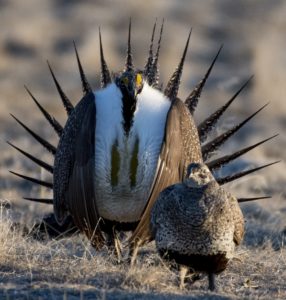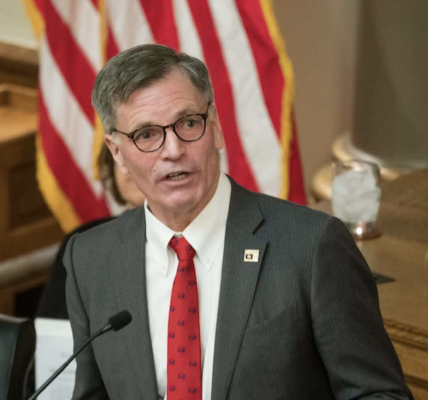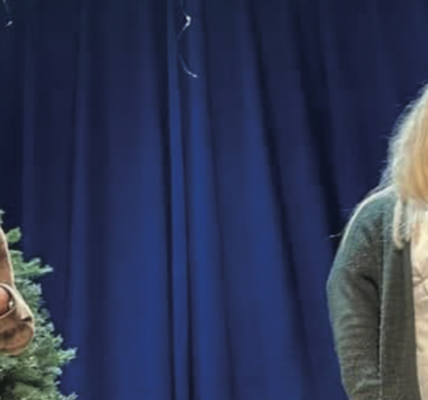By Angus M. Thuermer Jr., WyoFile.com

The U.S. Bureau of Land Management appears to ignore science in its latest proposal to revise conservation strategies for greater sage grouse in seven western states, a group of 22 scientists says.
The agency closes the comment period Thursday on six court-ordered environmental reviews which, if adopted as written, “[threaten] its federal trust responsibility” and “may have severe consequences for sage-grouse,” the scientists wrote in a four-page comment letter. The group collectively has spent more than 630 years studying sage grouse and sagebrush habitats, the letter says, and 12 of its signatories hold PhDs. (see letter below)
The BLM in February released the six draft supplemental environmental impact statements in response to an October 2019 U.S. District Court decision. A consortium of conservation groups — Western Watersheds Project, WildEarth Guardians, Center for Biological Diversity and Prairie Hills Audubon Society — secured production of the new drafts by successfully challenging the agency’s 2019 re-write of its West-wide conservation strategy.
A 1,152-page document addresses the federal government’s management approach for 17 million acres of grouse habitat and 28 million acres where the BLM has authority over federal minerals in Wyoming. After a coordination with federal and state stakeholders, “rigorous analysis … to align BLM Greater Sage-Grouse management with the State of Wyoming’s plans,” the BLM selected the “management alignment alternative” as its chosen strategy, the document reads.
But the BLM needs to expand the scope of its study, the scientists said in their letter. The agency needs to take into account recent population estimates that suggest grouse numbers have declined an average of 44% in strongholds, they argue. BLM strategies to control wildlife are unproven, the letter says, and a projected increase in wildfires remains a threat to the species.
The BLM also abandoned landscape scale management for a patchwork of state-led plans of questionable effectiveness, the letter says. The agency fails to require replacement when development destroys grouse habitat, the letter says, all of which results in a “fatal flaw” in the six reviews.
Spurred by an energy dominance agenda and other Trump administration initiatives, the challenged re-write replaced a Western strategy put in place in 2015 by then Secretary of the Interior Sally Jewell. Jewell sought to stave off listing the grouse as a threatened or endangered species.
In ordering the reconsideration, the court found that the BLM’s 2019 plans lacked a range of alternatives, did not take a hard look at environmental impacts, didn’t pass muster when analyzing cumulative effectives and required habitat replacement, known as compensatory mitigation. The Wyoming Stock Growers Association believes the BLM has met that challenge in the current proposal, Executive Vice President Jim Magagna wrote in association comments.
Stock growers joined the suit that resulted in the order to re-write the conservation plan for grouse, Magagna wrote. He applauded the BLM’s deletion of “all references to ‘net conservation gain,’” that had been part of Jewell’s initiative. She had sought to turn any development into a plus for grouse by requiring improvements to or conservation of habitat in exchange.
Stock growers also endorsed several changes to grazing management, including provisions to focus on “on the ground” conditions rather than grazing-permit requirements. Stock growers believe requirements for net conservation gains or compensatory mitigation — the required replacement of lost habitat — are issues that should be decided by Gov. Mark Gordon’s executive order protecting grouse, their letter states.
Wyoming’s Sage Grouse Implementation Team, tasked to oversee greater sage grouse health, has supported the governor’s order as an appropriate vehicle for grouse conservation.
The Petroleum Association of Wyoming also supports the proposed BLM changes, wrote Esther Wagner, the group’s vice president for public lands. In seven pages, she criticized past studies, said technology enabled drillers to reduce their footprint by 70% and wrote there’s no evidence Trump-era changes to conservation would be biologically significant.
Also, a study of 35 years of oil and gas data found “little evidence” of that industry causing a decline in sage grouse numbers. Acknowledging cyclical population fluctuations “the long-term trend line (1965-2015) actually indicates stable sage-grouse populations overall.” She cites a 2015 paper authored by some of the scientists who are now criticizing the BLM.
Oil and gas developers face several stipulations when they develop in sage grouse habitat, depending on language in the federal leases that authorize activities. Those range from seasonal restrictions to reclamation requirements to mandatory buffers between rigs and breeding leks — a distance some scientists believe is too small. (see PAW letter below)
The BLM outlined its work on grouse plans since 2011, including examining 143 alternatives in 18 environmental studies. It spent $17 million on studies and analyzed almost 16,000 substantive comments during that time. It also invested $249 million on treatment and restoration of habitat since 2013 and anticipates spending another $37 million this year.
“Consistent application of management actions across the state’s core areas and the BLM’s [Primary Habitat Management Areas] would result in beneficial impacts on the species in Wyoming,” the BLM study says.
In no longer requiring replacement for habitat lost to development, the agency said a major federal planning law “does not explicitly mandate or authorize the BLM to require public land users to implement compensatory mitigation as a condition of obtaining authorization for the use of the public lands.” In the latest study, the BLM also justified impacts of removing a ban on mineral exploration in 252,160 acres of the most valuable habit called “sagebrush focal areas.”
The BLM acknowledges there could be a loss of vegetation and habitat, habitat fragmentation and disturbance to sage grouse breeding leks in the previously protected sagebrush focal areas. “However,” the BLM says, “the development may or may not occur in areas sensitive to Greater Sage-Grouse.”
Sage-grouse numbers have diminished regularly since the 1960s, the scientists said, declining at an estimated 2% a year between 1965-2015. That puts the overall loss at 66% during that period, according to the letter.
A recent trend, first reported by WyoFile, suggests accelerated declines. From 2015-2019, state-level data suggest populations have declined 44% on average, the scientists wrote. “Numbers of sage-grouse in population strongholds (not just in periphery areas) are decreasing with estimated statewide declines of between 33[%] and 52% in Oregon, Idaho, Nevada, Montana, and Wyoming…” the letter reads.
The group worries about wildfire, saying approximately 3 million acres of BLM land burned in Idaho, Nevada and Utah between 2016 and 2019, a 40% increase compared to the previous four-year period. More is expected.
“Over the next 20 years, median annual area burned is projected to increase by 5 to over 11 times in states supporting sage-grouse populations,” the letter reads.
A BLM plan to stem wildfires by creating 11,000 miles of fuel breaks in Oregon, Washington, Nevada, Utah, Idaho and California “may do more harm than good,” the scientists wrote. They also faulted the agency for failing to knit together a West-wide vision addressing the accumulation of smaller state-govern impacts.
“[R]igorous cumulative impact assessments are especially important because of BLM’s reliance on the largely disjunct set of management approaches being implemented across the species’ range,” the letter reads. Yet “state-to-state coordination is limited,” scientists said.
A number of Wyoming experts signed the letter, including Matt Holloran, Bryan Bedrosian, Joseph Bohne, Thomas Christiansen and Rollin Sparrowe — who endorsed a greater federal umbrella to protect greater sage grouse.
“Long-term conservation of sage-grouse requires large, interconnected expanses of sagebrush habitats be managed for invasive annual grasses and other broad-scale factors,” they wrote. “To succeed, these efforts need the proactive participation of the Federal Government.”







